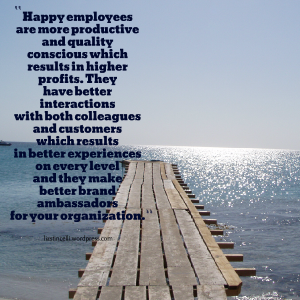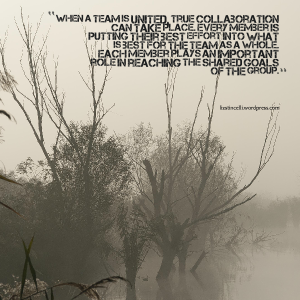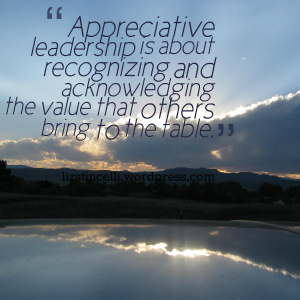Tag Archives: Leadership
Five Myths that Cause Women to Compete
 “What works for men does not always work for women, because success and likability are positively correlated for men and negatively correlated for women. That’s what the research shows. As a man gets more successful, everyone is rooting for him. As a woman gets more successful, both men and women like her less.” —Sheryl Sandberg
“What works for men does not always work for women, because success and likability are positively correlated for men and negatively correlated for women. That’s what the research shows. As a man gets more successful, everyone is rooting for him. As a woman gets more successful, both men and women like her less.” —Sheryl Sandberg
By Elizabeth Stincelli, DM
What are the Myths?
According to the United States Department of Labor, women make up 47% of the workforce. So, with those kinds of numbers, why do so many ambitious, motivated women feel like the workplace is a battlefield? Here are five myths that cause women to compete with, rather than support, each other’s progress.
There’s not room for all of us to succeed
One of the biggest myths we are afraid of is that there is not enough room for all of us to succeed. If this were true, why wouldn’t it apply to men just as much as women? We seem to think that there is ample opportunity for men to succeed, but that the opportunity for women is limited. This couldn’t be further from the truth; there is room and opportunity for all of us to succeed. While we can’t all hold the same position in the same organization, there are an abundance of leadership and entrepreneurial opportunities as well as opportunities to make a valuable contribution or meaningful impact if we keep our eyes and minds open.
To overcome this myth, we must learn that EVERY woman can make a difference. We must work together to overcome the challenges we face in the workplace. We need to change our perception that there are only a few seats at the table for powerful women. It’s up to us to bring about positive change. We need each other’s support; no one should feel like they have to go it alone.
We must compete at a man’s game
Another myth is that we, as women, must compete at a man’s game and on their terms. We now make up 47% of the workforce, why do we feel like we are playing on the competition’s home turf? Most people still seem to feel more comfortable when a man is in charge. As women, we face criticism when they act like a boss. The cards are already stacked against women; so, it’s up to us to change the game.
When we compete with one another, we play right into the man’s game. To overcome this myth, we should be supporting each other in our quest to fill high-power positions. Women are every bit as capable as men to fill leadership roles; we need to stop undermining each other by harshly judging, spreading rumors, and acting like catty, high school teenagers.
It’s survival of the fittest
It is a myth that, in business, only the fittest survive. This promotes an ‘every woman for herself’ mentality. It encourages an attitude of exclusion rather than inclusion. The truth is, when we help each other, we all succeed.
To overcome this myth we must learn to value each other’s passion and contributions. We must create an environment of trust where women can feel safe to share ideas and know they will be taken seriously. Instead of hoarding our wisdom and experience for our own benefit, we need to provide mentorship for other women and create great role models for others to follow. We are stronger when we work together.
If we bring others down it brings us up
One of the most dangerous myths that affects both our personal and professional lives is that if we put others down we will look and feel better about ourselves. This only works in the short-term, over time this behavior actually destroys our own self-esteem and sabotages our chances of success. Putting others down not only negatively affects how you feel about yourself, but also how other people perceive you.
If we are going to overcome this myth, we have to learn to work together instead of against each other. We all have strengths and weaknesses and something of value to contribute. We need to help bring out the best in each other, rather than tear each other down. Your actions speak to your character and your values; consciously focus your behavior on the message you are sending about yourself.
Our emotions are a weakness
One of the main myths we believe is that we must compensate for our emotions by showing that we can be tough and ruthless. But, emotional intelligence and empathy have been proven to be leadership strengths, not weaknesses. Great leaders are passionate and that passion often translates into emotion. But, women are more likely than men to be labeled as emotional versus passionate.
So, how do we overcome this myth? First, stop apologizing for showing your emotions. You allowing yourself to be feminine or emotional is never an excuse for others to treat you as weak, do not permit it. Being courageous enough to be in touch with, and acknowledge, our own emotions allows us to understand and empathize with the emotions of others; this is one of our greatest strengths, not a weakness.
Change the Game
As women, we need to take an active role in overcoming these myths and supporting each other. When we compete against one another we are missing a huge opportunity. When we refuse to let these myths govern our behavior we are operating outside of, what have become, cultural norms; this can cause discomfort. Well, get comfortable being uncomfortable.
We need to capitalize on the collaborative intelligence we have as women. Start building bridges that give all women a hand up. Share opportunities with each other. Be compassionate, inclusive, and generous. We are each responsible for how we choose to behave; choose behaviors that are encouraging and supportive of other women. Let’s change the game.
© 2015 Elizabeth Stincelli
Liz Stincelli is passionate about recognizing and inspiring the leader in each of us. She is the CEO of Stincelli Advisors where she focuses on helping organizations engage employees and improve organizational culture. Liz holds a Doctor of Management degree with an emphasis on organizational leadership.
Learn more about Liz by visiting her website, stincelliadvisors.com and connect with her on Twitter @infinitestin, Google+, and LinkedIn. You can contact her by email at stincelliadvisors@gmail.com.
Become a Confident Leader
 “Confidence thrives on honesty, on honor, on the sacredness of obligations, on faithful protection, and on unselfish performance. Without them it cannot live.” —Franklin D. Roosevelt
“Confidence thrives on honesty, on honor, on the sacredness of obligations, on faithful protection, and on unselfish performance. Without them it cannot live.” —Franklin D. Roosevelt
By Elizabeth Stincelli, DM
Confident Leadership
Confident leadership is not about knowing all the answers, it’s not about being perfect, and it’s definitely not about arrogance. Confidence is that quality that allows us to appreciate our own strengths, create win-win situations, and put our trust in others to be strong where we are weak. So, how can you become a confident leader?
Reflection
Confucius said, “By three methods we may learn wisdom: First, by reflection, which is noblest; second, by imitation, which is easiest; and third, by experience, which is the bitterest.” Reflection on your own abilities allows you to be real with yourself, to neither underestimate nor overestimate your capabilities. Know your competencies; if you know you are competent you will be confident. Reflect on your successes, but reflect even more on your failures; this is where your greatest lessons will come from. And, recognize the areas where others may have more to offer than you do.
Selflessness
Harry Frankfurt told us, “Recognizing truth requires selflessness. You have to leave yourself out of it so you can find out the way things are in themselves, not the way they look to you or how you feel about them or how you would like them to be.” Confident leaders are selfless and humble. They do not feel the need to belittle or undermine others. They look for ways they can use their abilities to support and lift those around them. Confident leaders listen more than they speak and welcome new ideas. Recognize the way things really are, be selfless, and build solid relationships and lasting connections.
Trust
Lao Tzu believed, “He who does not trust enough will not be trusted.” Confident leaders surround themselves with people who are smarter than them. They build trusting relationships with other competent, confident individuals. They trust their employees to design their own work; they delegate and do not micromanage. Confident leaders recognize the boundaries of their own expertise and trust others to fill in the gaps.
Recognition
Zig Ziglar explained, “Research indicates that employees have three prime needs: interesting work, recognition for doing a good job, and being let in on things that are going on in the company.” Confident leaders do not feel the need to be in the spotlight; they recognize the contributions of others and give credit where it is due. They recognize the importance of celebrating the small victories and let each individual know that they are valued.
Become a Confident Leader
When you become a confident leader you learn to reflect on your own strengths and weaknesses, you become selfless, you trust in the abilities of others, and you recognize the contributions of others. You are not arrogant, you are encouraging and inspirational. You put your best foot forward while encouraging and trusting others to do the same.
© 2015 Elizabeth Stincelli
Liz Stincelli is passionate about recognizing and inspiring the leader in each of us. She is the CEO of Stincelli Advisors where she focuses on helping organizations engage employees and improve organizational culture. Liz holds a Doctor of Management degree with an emphasis on organizational leadership.
Learn more about Liz by visiting her website, stincelliadvisors.com and connect with her on Twitter @infinitestin, Google+, and LinkedIn. You can contact her by email at stincelliadvisors@gmail.com.
Make the Investment
Three Ways to Invest in Your Employees that Won’t Cost You a Dime
“Transformation in the world happens when people are healed and start investing in other people.” —Michael W. Smith
By Elizabeth Stincelli, DM
Why Invest in Your Employees?
Your time is the most valuable gift you can offer, when you make time to invest in your employees, the work environment in your organization will become a much happier place. Happy employees are more productive and quality conscious which results in higher profits. They have better interactions with both colleagues and customers which results in better experiences on every level and they make better brand ambassadors for your organization. When you invest in providing experiences that instill a sense of pride and accomplishment in each employee, your employees will give 100% to the organization. So, how can you invest in your employees without spending a dime?
Engagement
Chuck Daly said, “There’s nothing like being involved with a team that can go that distance.” One of the best investments you can make in your employees is to engage them in their work tasks, their teams, and the organization as a whole. This engagement gives them a sense of pride and satisfaction in their work. Bring out the best in them by encouraging them to take control over their own work and to identify and find solutions to problems. Listen to what they value and want to accomplish. Don’t micromanage; give your employees the skills and resources they need and then empower them to design how their work gets done. The experience your customers have with your organization is directly linked to how engaged and satisfied your employees are; invest in the engagement of your people.
Opportunity
Bobby Unser believes, “Success is where preparation and opportunity meet.” Providing opportunities to grow, personally and professionally, in the organization is a valuable investment in your employees. When employees grow, your organization grows; when they excel, you excel. Your employees are your most valuable asset, don’t let them feel underutilized. Continually give them the opportunity to gain experience and control their own work tasks. Offer them mentorship opportunities and give them access to training and development resources. Prepare your people to move on to something bigger and better; invest in offering your employees opportunity.
Culture
Ken Robinson tells us, “The role of a creative leader is not to have all the ideas; it’s to create a culture where everyone can have ideas and feel that they’re valued.” Investment in your organizational culture is one of the most important investments you can make. When you develop a culture that inspires a sense of community and truly engages employees, you create a trusting and safe environment for collaboration. This type of culture is all-inclusive, embracing differences and a encouraging the sharing of ideas. It emphasizes the development of relationships and open communication throughout the organization regardless of title or position. A strong culture recognizes the value that every employee contributes to the success of the organization; invest in your culture.
Make the Investment
Bob Parsons advises, “Never stop investing. Never stop improving. Never stop doing something new.” When we think of making an investment, we see dollar signs. But, as leaders, there are many investments in our employees that we can make that won’t cost us a dime. And, the return we will see is immeasurable. Offer your employees engaging work, provide them with opportunities to grow, and create a culture that embraces a sense of community and the development of relationships. Make the investment in your employees and watch the return.
© 2015 Elizabeth Stincelli
Elizabeth Stincelli is passionate about recognizing and inspiring the leader in each of us. She is the CEO of Stincelli Advisors where she focuses on helping organizations engage employees and improve organizational culture. Elizabeth holds a Doctor of Management degree with an emphasis on organizational leadership.
Learn more about Elizabeth by visiting her website, stincelliadvisors.com and connect with her on Twitter @infinitestin, Google+, and LinkedIn. You can contact her by email at stincelliadvisors@gmail.com.
Six Reasons Why Your Employees Don’t Believe a Word You Say
By Doug Dickerson and Elizabeth Stincelli
“Don’t believe what I say. Believe what I do.” —Carlson Ghosn
Two psychiatrists meet at their 20th college reunion. One is vibrant, while the other looks withered and worried. “So what’s your secret?” the older looking psychiatrist asks. “Listening to other people’s problems every day, all day long, for years on end, has made an old man of me.” “So,” replies the younger looking one, “who listens?”
That humorous story reminds us as leaders of not just the necessity of listening but of the importance of how we communicate. It’s not so much what we say that’s important but that we are leaders who understand why our people should listen to us in the first place.
If your people are tuning you out and not believing what you say then your leadership is on life-support. Knowing the symptoms is the first step in turning things around. If your people don’t believe a word you say then here are six reasons why.
You are self-centered
If you are a self-centered leader your people will not believe you because you are only looking out for yourself. When decisions are made based upon what is best for you –what makes you look good- then you are using your people. Self-centered leadership tends to be manipulative and puts what is best for you above what is best for the team. If you are a self-centered leader you’d better wake up before it’s too late. One day you will look around and you’ll discover that not only are your people not believing you – they are not following you either.
You are inconsistent
Inconsistent actions produce inconsistent results. The flow and continuity of your leadership is essential to your success. If you say one thing and do another then those very actions will lead to mistrust and will marginalize your leadership. Flexibility is a must for any team moving forward. Unexpected things happen and your people will have to learn to go with the flow. But if you are inconsistent in terms of what you communicate or how you treat them it will be impossible for them to move forward or have faith in your leadership.
You don’t have their backs
Nothing will empower your team faster than having the backs of your people. A good leader knows this. But your people will not believe you if your message to them says “I have your back” yet you are nowhere to be found when they need you. When you empower your people and have their backs you create a momentum that can take your team to new levels of success. Don’t squander the drive, motivation, and ingenuity of your people by failing at this one critical element of your leadership. If you have the backs of your people they will have yours.
Your ego is front and center
If, as a leader, your ego is front and center, your employees won’t believe a word you say. Your ego can prevent you from seeing the world as it really is; you begin interpreting reality through your own biased lens. When your ego is front and center you send the message that your opinion is the only one that matters. Soon your employees, tired of hearing about how you know everything, will stop listening to you at all.
You lead with fear
If you lead with fear you will never earn the trust of your employees and they won’t believe a word you say. Fear stimulates the fight or flight response. In this state of mind, there is no higher-level cognitive thinking. When you lead with fear your employees disengage and become more focused on protecting themselves than what you are saying. Your attempt to control your employee’s behavior through fear will result in distrust and will undermine your ability to share your message and vision.
They don’t feel valued
Our success is deeply intertwined with our ability to collaborate. When your employees don’t feel valued they lose interest in continuing to try to contribute to the team. They withdraw and you lose the value of their unique skills and knowledge. Your employees need to have a voice and to have their individual contributions recognized and valued. Communication is a two-way street and when your employees don’t feel valued, you lose their respect which has a negative impact your ability to communicate and influence as a leader. When your employees don’t feel valued they won’t believe a word you say.
The key to leadership is trust and influence. If your people don’t believe a word you say, you have lost your ability to lead. It’s time to evaluate your leadership. Is your leadership self-centered or inconsistent? Do you have your employee’s backs? Is your ego front and center? Are you leading with fear? Do your people feel valued? Answer these questions honestly, make a change, and start leading today.
####
© 2015 Doug Dickerson and Elizabeth Stincelli
Doug Dickerson is an internationally recognized leadership speaker, columnist, and author. For more information about his books and speaking engagements visit Dougdickerson.wordpress.com
Elizabeth Stincelli is passionate about recognizing and inspiring the leader in each of us. She is the CEO of Stincelli Advisors where she focuses on helping organizations engage employees and improve organizational culture. Elizabeth holds a Doctor of Management degree with an emphasis on organizational leadership.
Learn more about Elizabeth by visiting her website, stincelliadvisors.com and connect with her on Twitter @infinitestin, Google+, and LinkedIn. You can contact her by email at stincelliadvisors@gmail.com.
Five Behaviors that Unite Your Team
“Divide and rule, the politician cries; unite and lead, is the watchword of the wise.” —Johann Wolfgang von Goethe
By Elizabeth Stincelli, DM
Why?
Why is it so important to unite your team? When your team is divided it is every man for himself. Each member has their own agenda and is looking out for their own best interest. When a team is united, true collaboration can take place. Every member is putting their best effort into what is best for the team as a whole. Each member plays an important role in reaching the shared goals of the group. So, what behaviors will help unite your team?
Finding commonality
Barbara Deming said, “The longer we listen to one another – with real attention – the more commonality we will find in all our lives. That is, if we are careful to exchange with one another life stories and not simply opinions.” Everyone wants to feel a sense of belonging, to be part of something bigger than themselves, and to work with others with whom they can relate. By creating a sense of community and belonging you can develop a team identity and begin to unite your team.
Eliminating the us vs. them mentality
Sharon Salzberg believes, “We can learn the art of fierce compassion – redefining strength, deconstructing isolation and renewing a sense of community, practicing letting go of rigid us-vs.-them thinking – while cultivating power and clarity in response to difficult situations.” Unity requires the building of trusting, respectful relationships. An us vs. them mentality undermines your ability to form meaningful relationships throughout your team. Recognize that your team is your #1 asset; every member has something to contribute. Help unite your team by eliminating the us vs. them mentality and by giving credit where it is due, communicating openly, and showing respect for every member.
Recognize that everyone adds value
Michelle Obama explained, “We learned about gratitude and humility – that so many people had a hand in our success, from the teachers who inspired us to the janitors who kept the school clean… and we were taught to value everyone’s contribution and treat everyone with respect.” Everyone wants to know that their contribution is valued. Every member of the team is there for a reason, they have a specific role to play, and they bring with them unique experiences and knowledge. Unite your team by showing them that you recognize the value they bring to the team. Invest in them and provide opportunities for growth. Give them the support, encouragement, and the resources they need to be successful.
Share the success
Michael Ironside tells us, “People who get involved with the success of something have to be given at least some share in that success.” When the team succeeds, everyone on the team succeeds. Create a win-win team environment where individual members benefit as the team progresses. Focus on removing obstacles and helping others grow and succeed. Every day offers the opportunity to take on individual and shared challenges that help us grow and move us one step closer to achieving our goals. Set ambitious goals, unite your team under one vision, and then share and celebrate successes both small and large.
Let leaders emerge naturally
Robin S. Sharma reminded us, “Leadership is not about a title or a designation. It’s about impact, influence, and inspiration. Impact involves getting results, influence is about spreading the passion you have for your work, and you have to inspire team-mates and customers.” Help team members recognize their strengths and weaknesses then find ways to empower them to use their strengths for the benefit of the team. Serve as a coach, at the sidelines, allowing the team to share in the leadership. Allow team members to step up when their strengths fit the current needs of the group. Unite your team by empowering them to stand up for what they believe in, always have their back, and let leaders emerge from among the ranks.
Unite Your Team
Create unity in your team where collaboration, innovation, and continual growth can take place. Develop a supportive environment where the contribution of each member is recognized and valued. Find commonality, eliminate the us vs. them mentality, recognize that everyone adds value, share the success, and let leaders emerge naturally. A successful team is a united team.
© 2015 Elizabeth Stincelli
Elizabeth Stincelli is passionate about recognizing and inspiring the leader in each of us. She is the CEO of Stincelli Advisors where she focuses on helping organizations engage employees and improve organizational culture. Elizabeth holds a Doctor of Management degree with an emphasis on organizational leadership.
Learn more about Elizabeth by visiting her website, stincelliadvisors.com and connect with her on Twitter @infinitestin, Google+, and LinkedIn. You can contact her by email at stincelliadvisors@gmail.com.
Three Steps to Becoming an Appreciative Leader
 “Everyone wants to be appreciated, so if you appreciate someone, don’t keep it a secret.” —Mary Kay Ash
“Everyone wants to be appreciated, so if you appreciate someone, don’t keep it a secret.” —Mary Kay Ash
By Elizabeth Stincelli, DM
Appreciative Leadership
Everyone wants to feel valued and to know that their contributions make a difference. In a nutshell, that’s what appreciative leadership is all about. It’s about recognizing and acknowledging the value that others bring to the table. It’s about giving them the opportunity to show off what they know and what they can do that brings value to the project, the team, and the organization. It’s about realizing that you do not have all of the answers, that you can’t do it all by yourself. Your success and the success of your organization is dependent on your ability to embrace the strengths of others, to set your ego aside and let them shine, and to show sincere appreciation for specific, individual contributions.
Values other’s strengths
Mattie Stepanek said, “Unity is strength…when there is teamwork and collaboration, wonderful things can be achieved.” While Mattie suggested that unity is strength, I take this one step further. What happens when we bring everyone’s strengths to the table in a unified effort? What incredible things might we accomplish together? To be an appreciative leader, you must let go of your ego; it’s not all about you and what you know, it’s about the entire team and bringing each of their strengths together to achieve shared goals. Value the strengths of others and let them be strong where you are weak.
Gives others the opportunity to shine
Chris Hadfield believes, “Ultimately, leadership is not about glorious crowning acts. It’s about keeping your team focused on a goal and motivated to do their best to achieve it, especially when the stakes are high and the consequences really matter. It is about laying the groundwork for others’ success, and then standing back and letting them shine.” Appreciative leaders bring out the best in others. They invest time and resources in developing their employees and then they get out of the way and let their employees shine. Show your employees that you believe in them and soon they will start believing in themselves.
Shows specific appreciation
Ralph Marston told us to, “Make it a habit to tell people thank you. To express your appreciation, sincerely and without the expectation of anything in return.” Appreciative leaders let others know that they are of value and they give credit where credit is due. Everyone is unique and has something distinctive to offer; they want the opportunity to make a meaningful contribution and then to be recognized and valued on an individual level. While it’s great to hear “thank you”; how much more meaningful is it hear “Thank you, John, for the great job you did on the monthly sales report. Your graphs were amazing. I appreciate all the hard work you put into this project.”?
Start Today
Start being an appreciative leader today. Your appreciation will engage and inspire your employees. It will set a great example of how to value and treat others. This type of leadership focuses on helping others succeed and then showing sincere appreciation for the value they bring to the organization. Your appreciative leadership will build teams that allow individuals to use their strengths for the greater good, give employees opportunities to shine, and will show appreciation that is specific and individualized. When employees feel appreciated, they will appreciate you in return. And, employees who appreciate their leaders are willing to walk through fire for them. Show appreciation, develop loyalty, and succeed as an appreciative leader.
© 2015 Elizabeth Stincelli
Elizabeth Stincelli is passionate about recognizing and inspiring the leader in each of us. She is the CEO of Stincelli Advisors where she focuses on helping organizations engage employees and improve organizational culture. Elizabeth holds a Doctor of Management degree with an emphasis on organizational leadership.
Learn more about Elizabeth by visiting her website, stincelliadvisors.com and connect with her on Twitter @infinitestin, Google+, and LinkedIn. You can contact her by email at stincelliadvisors@gmail.com.






